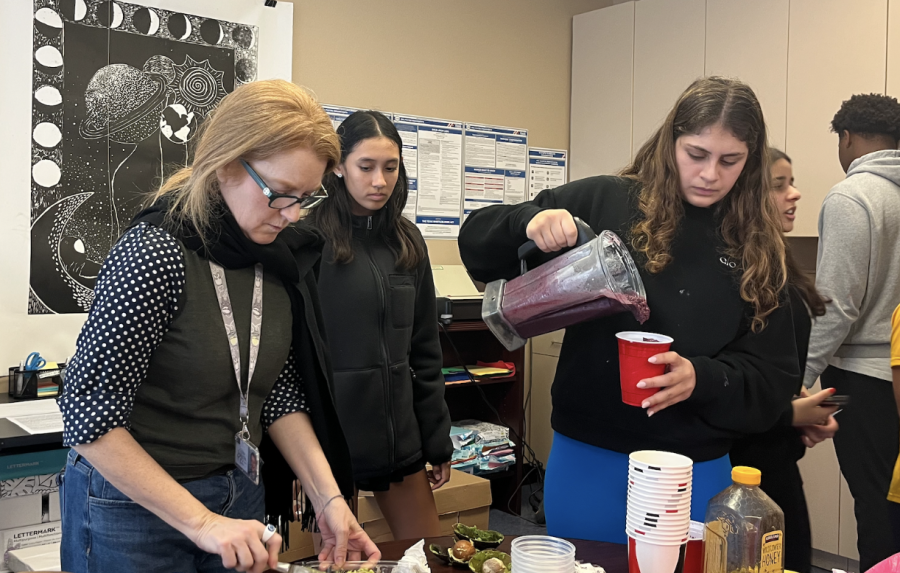Students and faculty delve into multifaceted mindfulness
Ms. Forster helps students prepare their meals for their wellness project.
January 26, 2023
Since she was a teenager, Upper School English teacher, Ms. Christa Forster has kept a daily notebook.
Journaling has been her primary method of practicing mindfulness and now through her Interim Term class “The Art and Science of Mindfulness,” co-taught by Upper School science teacher, Dr. Aly Nadworny, Ms. Forster teaches students ways to use mindfulness in their daily lives.
“This class explores three questions: What is mindfulness? Why be mindful? How can I be mindful?” Ms. Forster said. “There are so many different ways to practice being mindful.”
So far, the class has practiced mindful breathing, awareness, movement, and eating. Ms. Forster and Dr. Nadworny teach students new tools and techniques to practice mindfulness but also the science behind it.
Daily mindfulness practice is a habit for both teachers. Dr. Nadworny said she makes an effort to meditate for five minutes each day and to be conscious of her feelings of tension, anxiety, and impatience. Mindfulness has helped her become a better mom and teacher, she said.
Ms. Forster has participated in “sitting meditation.”
“I sit still—in a chair, or on a special meditation pillow, called a zafu—and I focus on my breath, for a specific amount of time,” Forster said, adding that her meditation can last anywhere from one to 20 minutes, depending on the amount of time she has to spend.
“I do it here at Kinkaid in the mornings,” Ms. Forster said. “Dr. Lomax-Bream usually joins me, and we sit anywhere from five to 10 minutes. Everyone is invited to join us. Usually, we meet in my classroom before tutorials start.”
But she also practices mindfulness informally by slowing down her walking pace, noticing new things about her environment, trying to be mindful of her speech, and listening to others.
“When I meet people, I practice being present so that I am able to connect with them authentically and remember names,” she said. “Basically, I try to live my life mindfully. Believe me, living mindfully is a practice, not a goal, and I am mindless a lot of the time, especially since the invention of social media.”
Dr. Nadworny said she decided to co-teach this class because she noticed immense stress in the student population in the short amount of time that she has been at Kinkaid. She was hired in 2022.
“I spent most of my teaching degree researching the effects of mindfulness on student anxiety and academic achievement,” Dr. Nadworny said. “I truly believe that mindfulness practice can support our students in both their personal and academic lives.”












